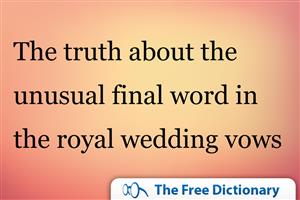Relative Adverbs
What is a relative adverb?
Relative adverbs, like relative pronouns, introduce relative clauses (also called adjective clauses) that modify a noun or a noun phrase. However, while relative pronouns (such as that, which, or who) are used to relate information to a person or a thing, relative adverbs (where, when, and why) are used when the information relates to a place, time, or the reason an action took place.
Functions of relative adverbs
Place
We use the relative adverb where to introduce information that relates to a place. The place can be any location: a house, city, country, geographical region, or even a planet.
For example:
- “The house where I was born is a very special place.”
- “Paris, where I want to live, is the most beautiful city in the world.”
- “I’ll always remember the river where we learned to swim.”
Time
We use the relative adverb when to introduce information that relates to a time. That time can be an actual time of day, a day, a week, a year, or even an era. For example:
- “The 80s were a time when big hair was considered fashionable.”
- “I love casual Fridays, when we get to wear jeans to work.”
- “Yesterday was the day when I met my husband for lunch.”
Reason
We use the relative adverb why to introduce information that relates to the reason something happened. In this case, the noun being modified is “the reason,” but it is often omitted to reduce repetitiveness. For example:
- “I don’t know the reason why he got angry.”
OR
- “I don’t know why he got angry.”
- “Do you know the reason why the sky is blue?”
OR
- “Do you know why the sky is blue?”
Restrictive and non-restrictive relative clauses
Like relative pronouns, relative adverbs can introduce a restrictive relative clause (also called a defining clause), or a non-restrictive relative clause (also known as a non-defining clause). Restrictive relative clauses identify the noun, giving us essential information about it, while non-restrictive clauses simply give us additional information that is not essential to the sentence. Let’s look at the difference:
Restrictive relative clauses
As mentioned, restrictive relative clauses identify the noun, giving us information about it that we need to know in order to understand the speaker’s meaning. This type of clause does not need any commas. For example:
- “The house where I was born is a very special place.”
- “I’ll always remember the river where we learned to swim.”
- “Yesterday was the day when I met my husband for lunch.”
- “The 80s were a time when big hair was considered fashionable.”
- “I don’t know (the reason) why he got angry.”
- “Do you know (the reason) why the sky is blue?”
The restrictive relative clause in each of the sentences above is underlined. Now, observe what happens to the meaning of the sentences if we remove the relative clause:
- “The house is a very special place.” (What house?)
- “I’ll always remember the river.” (What river?)
- “Yesterday was the day.” (What day?)
- “The 80s were a time.” (What kind of time?)
- “I don’t know the reason.” (The reason for/about what?)
- “Do you know the reason?” (What reason?)
When you remove a restrictive relative clause, the nouns are no longer identifiable and the sentences contain much less information, as you can see from the examples above. Instead, the listener or reader is left with questions.
Non-restrictive relative clauses
Non-restrictive relative clauses give us additional information about a noun that has already been identified, but this information is not essential for the sentence to make sense. Only two of the relative adverbs, where and when, can be used to introduce non-restrictive relative clauses; why cannot.
Note that non-restrictive relative clauses must be set apart from the rest of the sentence by commas. For example:
- “Paris, where I want to live, is the most beautiful city in the world.”
- “The blue house on the corner, where those kids are playing, is the house I want to buy.”
- “I love casual Fridays, when we get to wear jeans to work.”
- “May, when flowers bloom, is my favorite month of the year.”
In the examples above, the underlined relative clauses merely give extra information about the nouns; they do not define them. The sentences would still make sense even if the relative clauses were removed, which is how we know that we are dealing with non-restrictive relative clauses. For example:
- “Paris is the most beautiful city in the world.”
- “The blue house on the corner is the house I want to buy.”
- “I love casual Fridays.”
- “May is my favorite month of the year.”
Formality
Relative adverbs are used in daily speech and writing to take the place of the structure preposition + which. This structure is considered very formal and is usually only used in academic writing or particularly formal speech.
For example:
- “This is the house in which I was born.”
- “April 10th is the day on which I met my husband.”
- “Do you know the reason for which the sky is blue?”
These sentences all sound too formal for daily use, so we usually use relative adverbs instead:
- “This is the house where I was born.”
- “April 10th is the day when I met my husband.”
- “Do you know the reason why the sky is blue?”
Get all volumes of The Farlex Grammar Book in paperback or eBook.

